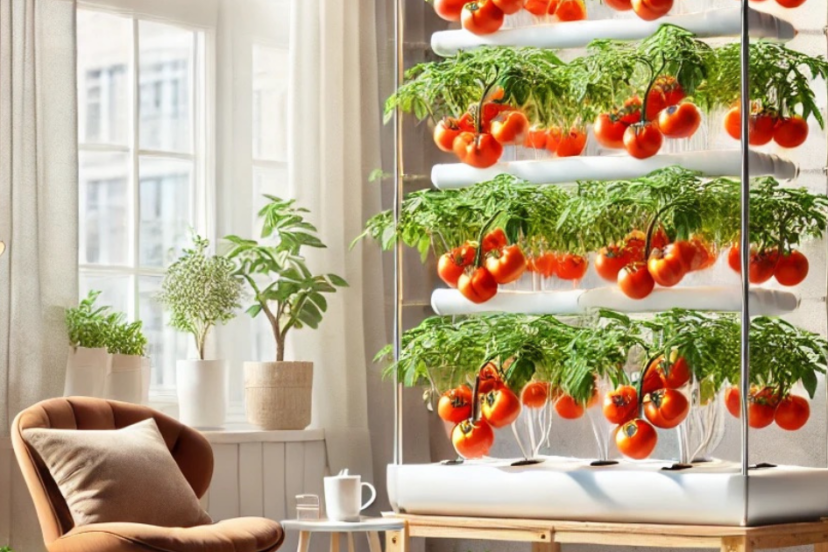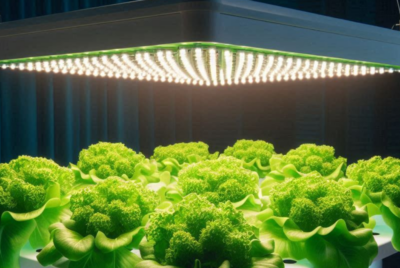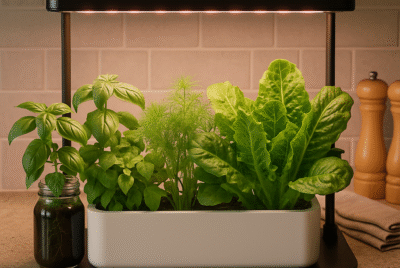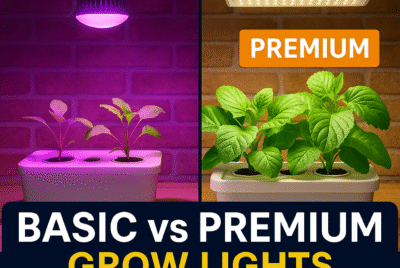Best Plants for Hydroponics: A Complete Guide to Growing Success
Hydroponics is an innovative and efficient way to grow plants without soil. Instead, the plants thrive on a nutrient-rich water solution, enabling them to absorb everything they need directly. Whether you’re new to hydroponics or have been experimenting for a while, choosing the best plants for hydroponics can significantly impact your success.
I’ve been working with hydroponics for years, and through trial and error, I’ve discovered that some plants simply thrive better than others. In this guide, I’ll take you through my personal recommendations for the best plants for hydroponics, complete with tips, growing conditions, and product recommendations. I’ll also cover the best hydroponic systems, like Kratky hydroponics, hydroponic tower gardens, and DWC hydroponics. By the end, you’ll have a well-rounded understanding of the plants that will thrive in your setup.
Best Plants for Hydroponics
There are countless plants that you can grow in a hydroponic system, but I’ve found that certain ones thrive more consistently than others. From leafy greens and herbs to fruiting plants and root vegetables, there’s a lot of versatility in what you can grow hydroponically.
Here are some of the most successful types of plants for hydroponics, based on my personal experience and success rates:
Leafy Greens
Leafy greens are a favorite for hydroponic enthusiasts, including myself. They’re fast-growing, high in nutrients, and respond exceptionally well to hydroponic nutrients.
Lettuce
Lettuce is hands down one of the best plants for hydroponics. It grows fast, requires minimal space, and has shallow roots, making it ideal for small hydroponic setups like a hydroponic tower garden or Kratky hydroponics. I’ve found that lettuce varieties like butterhead and romaine do particularly well.
1. Use a high-quality hydroponic nutrient solution for optimal growth.
2. Ensure consistent light exposure, as lettuce thrives in bright environments.
3. Choose a system like DWC hydroponics for a steady water supply.
4. Monitor the pH levels closely, aiming for a range of 5.5 to 6.5.
5. Harvest often to encourage continuous growth.
Spinach
Spinach is another winner when it comes to hydroponics. It grows quickly and can be harvested multiple times. The key is to maintain the right nutrient balance, as spinach requires plenty of nitrogen.
1. Use a best hydroponic system like ebb and flow hydroponics to ensure proper water circulation.
2. Spinach prefers cooler temperatures, so keep your system in a cool area.
3. Opt for a full-spectrum grow light to ensure healthy growth.
4. Add hydroponic clay pebbles for root stability and moisture retention.
5. Prune regularly to prevent overcrowding in your system.
Kale
Kale has become quite the superfood, and it’s incredibly easy to grow hydroponically. I love kale because it’s resilient, and once it starts growing, it just keeps on giving.
1. Plant kale in a hydroponic tower DIY system for vertical growth efficiency.
2. Kale thrives in cooler temperatures, similar to spinach, so watch the climate.
3. Ensure proper spacing between plants to avoid crowding.
4. Regularly check the water pH, keeping it around 6.0 to 7.0.
5. Harvest the outer leaves first to keep the plant growing longer.
Arugula
Arugula is fast-growing and adds a peppery taste to salads. It does really well in hydroponics, and because of its shallow roots, it works great in small setups.
1. Use a DWC hydroponic system to keep the roots well-nourished.
2. Arugula grows best in moderate light conditions, so don’t overexpose.
3. Keep a steady airflow to prevent mold growth.
4. Opt for a nutrient mix rich in potassium for robust leaves.
5. Harvest within four weeks to enjoy tender, flavorful greens.
Swiss Chard
Swiss chard is another leafy green that performs exceptionally well in hydroponics. It’s colorful and nutrient-packed, making it a great addition to your indoor garden.
1. Set up a hydroponic tower garden to save space while growing chard.
2. Maintain a water pH between 6.0 and 6.5 for optimal growth.
3. Ensure at least 10-12 hours of light daily for healthy leaves.
4. Choose a well-aerated system like aeroponics vs hydroponics.
5. Use organic hydroponic nutrients to avoid chemical buildup.
Herbs
Herbs are my personal favorite to grow in hydroponics, as they’re easy, versatile, and bring fresh flavors to your kitchen. If you’re new to hydroponics, starting with herbs is a great choice.
Basil
Basil is a fast-growing herb that’s perfect for hydroponics. It’s one of the most rewarding plants to grow because it matures quickly, and you can harvest it multiple times.
1. Basil thrives in hydroponic tower DIY setups with proper light exposure.
2. Use a nutrient solution with a higher nitrogen content for bushier growth.
3. Prune basil regularly to encourage fuller plants.
4. Basil prefers temperatures around 70-75°F, so monitor the climate.
5. For more flavor, pick leaves just before flowering.
Mint
Mint is almost too easy to grow—it can quickly take over your garden if you’re not careful! It’s best to grow mint in its own container or a separate part of your hydroponic system.
1. Choose a best hydroponic system that has good airflow, like ebb and flow hydroponics.
2. Mint prefers indirect light, so keep it out of direct sunlight.
3. Prune often to prevent overgrowth and keep it from taking over.
4. Use a balanced nutrient solution, rich in phosphorus.
5. Ensure roots have room to expand to avoid root binding.
Cilantro
Cilantro can be a little tricky to grow, but with hydroponics, it’s much easier to control. It requires a lot of light, so make sure your system can provide that.
1. Set up Kratky hydroponics for minimal maintenance.
2. Use a pH range between 6.5 and 7.0 for cilantro.
3. Harvest leaves before the plant flowers for the best flavor.
4. Cilantro prefers cooler temperatures, so keep it away from heat sources.
5. Add a hydroponic clay pebbles layer to help with water retention.
Fruiting Plants
Growing fruiting plants in hydroponics takes a bit more effort, but the rewards are fantastic.
Tomatoes
Tomatoes are one of the most popular plants to grow hydroponically. They require a bit more care and attention, but once you get the hang of it, they’ll reward you with bountiful harvests.
1. Use a DWC hydroponic system to ensure constant water flow and oxygen.
2. Provide ample light—tomatoes need at least 14-16 hours a day.
3. Prune regularly to promote airflow and prevent fungal growth.
4. Use a nutrient mix high in potassium and calcium for strong fruit production.
5. Keep the temperature between 65-85°F for optimal fruiting.
Peppers
Like tomatoes, peppers do well in hydroponics when given the right conditions. Both hot and sweet varieties can be grown indoors with ease.
1. Use a hydroponic tower garden to support the growth of multiple pepper plants in a compact space.
2. Keep the temperature between 70-80°F to promote flowering and fruit development.
3. Use a nutrient solution rich in nitrogen during the vegetative stage and increase potassium during flowering.
4. Peppers need about 12-14 hours of light daily, so invest in quality grow lights.
5. Prune the lower leaves to encourage better air circulation and stronger fruit development.
Cucumbers
Cucumbers grow incredibly fast in hydroponics, but they need ample space to spread out. Using a vertical system like a hydroponic tower garden can help you save space while supporting healthy growth.
1. Train the plants to climb vertically using a trellis or support system.
2. Cucumbers require a lot of water, so a DWC hydroponic system or ebb and flow hydroponics works best.
3. Ensure plenty of air circulation to prevent mildew and fungal issues.
4. Use a nutrient solution high in nitrogen during the early stages and switch to higher potassium as the plant begins to flower.
5. Keep the water temperature between 65-75°F to promote vigorous growth.
Strawberries
Strawberries are a delightful addition to any hydroponic garden, though they require a bit more care to get the best yield. I recommend using a hydroponic tower DIY system for growing strawberries.
1. Strawberries need a lot of light—at least 12-14 hours per day for optimal fruiting.
2. Use a nutrient solution that’s high in phosphorus and potassium to support fruit development.
3. Keep the water temperature between 60-70°F to avoid shocking the plants.
4. Ensure a well-aerated root zone to prevent root rot and fungal diseases.
5. Prune runners (side shoots) to focus the plant’s energy on fruit production.
Beans
Beans are an excellent choice for hydroponics, especially if you’re short on space. They grow vertically and can produce a large yield with minimal effort.
1. Use a hydroponic tower garden or vertical support to train beans to grow upwards.
2. Beans thrive with moderate light exposure—aim for 8-10 hours daily.
3. Use a nutrient solution balanced in nitrogen, phosphorus, and potassium.
4. Maintain a water pH of 6.0-6.5 for optimal growth.
5. Keep the temperature around 65-75°F for vigorous plant health.
Root Vegetables
While many root vegetables can be tricky to grow in traditional hydroponics due to space constraints, systems like Kratky hydroponics or ebb and flow hydroponics can make it possible to cultivate these crops successfully.
Radishes
Radishes grow quickly and require little maintenance, making them a great addition to your hydroponic garden. They also don’t need much space, which is perfect for small setups.
1. Use a system like ebb and flow hydroponics to ensure consistent moisture.
2. Choose a deep container or system to accommodate the root depth.
3. Keep the water temperature around 60-70°F to avoid stunted growth.
4. Provide 6-8 hours of light per day—radishes don’t need as much light as leafy greens.
5. Opt for a nutrient solution high in potassium for strong root development.
Carrots
Carrots can be grown hydroponically with some care. The key is to use a deep system that allows the roots to fully develop without restriction.
1. Use a deep water culture (DWC) hydroponic system to give the roots room to grow.
2. Ensure proper aeration with a good air pump to oxygenate the water.
3. Use a nutrient mix rich in phosphorus for robust root development.
4. Keep the water temperature between 65-75°F to promote growth.
5. Monitor pH closely, aiming for a range of 6.0-6.5.
Beets
Beets are another root vegetable that can grow well in hydroponics with the right setup. They’re packed with nutrients and can be harvested relatively quickly.
1. Use a Kratky hydroponic system for minimal maintenance and easy root growth.
2. Ensure the nutrient solution is high in potassium to encourage root development.
3. Keep the water temperature cool—between 60-70°F is ideal.
4. Provide moderate light exposure of 8-10 hours daily.
5. Thin out seedlings to avoid overcrowding and ensure the roots have space to grow.
Onions
Onions are surprisingly easy to grow in hydroponics, especially when using a deep-water culture system. They don’t require much space, making them perfect for smaller setups.
1. Use a DWC hydroponic system for easy water management.
2. Onions need 10-12 hours of light daily for bulb formation.
3. Keep the water pH between 6.0 and 6.5 for optimal growth.
4. Use a nutrient solution that’s high in potassium to promote bulb growth.
5. Harvest once the tops begin to fall over and dry out.
Turnips
Turnips are another root vegetable that adapts well to hydroponics. They’re quick to mature and packed with nutrients.
1. Opt for an ebb and flow hydroponic system for proper root hydration.
2. Keep the nutrient solution balanced, with slightly higher potassium levels.
3. Provide at least 6-8 hours of light daily.
4. Maintain a water temperature of 60-70°F to avoid growth issues.
5. Harvest when the turnips reach the desired size, typically around 6-8 weeks.
Flowering Plants
Hydroponics isn’t just for food—you can also grow stunning flowers indoors! Here are some of my favorites.
Marigolds
Marigolds are vibrant and low-maintenance, making them a perfect choice for hydroponic gardening.
1. Use a hydroponic tower DIY system for vertical flower growth.
2. Provide full-spectrum grow lights for at least 10-12 hours daily.
3. Maintain a water pH of 6.0-7.0 for healthy blooms.
4. Use a nutrient solution with a good mix of nitrogen, phosphorus, and potassium.
5. Prune regularly to encourage more blooms.
Petunias
Petunias are another colorful addition to your hydroponic flower garden. They require more attention but are well worth the effort.
1. Use a system like aeroponics vs hydroponics for better nutrient absorption.
2. Petunias need at least 12-14 hours of light for vibrant blooms.
3. Keep the water temperature between 65-75°F to promote flower production.
4. Use a nutrient solution high in phosphorus for better blooms.
5. Regularly deadhead to encourage continuous flowering.
Nasturtiums
Nasturtiums are edible flowers that can add both color and flavor to your hydroponic garden.
1. Use a hydroponic tower garden to save space and grow multiple plants.
2. Provide at least 8-10 hours of light daily for healthy growth.
3. Keep the water temperature between 65-70°F for optimal results.
4. Use a nutrient solution high in potassium to support flower development.
5. Regularly prune to promote bushier growth.
Pansies
Pansies thrive in cooler environments and can add a splash of color to your hydroponic setup.
1. Choose a Kratky hydroponic system for easy care.
2. Keep the temperature cool—between 50-65°F for best results.
3. Use a balanced nutrient solution, especially rich in phosphorus.
4. Provide moderate light exposure of 6-8 hours daily.
5. Water regularly to prevent drying out, but avoid overwatering.
Zinnias
Zinnias are fast-growing flowers that can brighten up your hydroponic garden with minimal effort.
1. Use a DWC hydroponic system for consistent water supply.
2. Provide at least 12-14 hours of light daily for robust blooms.
3. Maintain a water pH between 6.0 and 7.0 for healthy growth.
4. Use a nutrient solution that’s high in potassium for strong flowers.
5. Thin out seedlings to avoid overcrowding and encourage more blooms.
Best Hydroponic Systems for Different Plants

Choosing the right hydroponic system is just as important as selecting the right plants. Here’s a quick rundown of some of the best systems for growing hydroponic plants.
Kratky Hydroponics
Kratky hydroponics is one of the simplest and most affordable systems. It’s perfect for beginners and requires minimal maintenance.
Best plants for Kratky hydroponics: Lettuce, herbs, and small root vegetables like radishes.
DWC Hydroponics
Deep Water Culture (DWC) hydroponics is ideal for larger plants, as it provides constant access to nutrients and oxygen.
Best plants for DWC hydroponics: Tomatoes, cucumbers, peppers, and large leafy greens like kale and Swiss chard.
1. General Hydroponics WaterFarm Complete: This system is perfect for growing larger plants like tomatoes and cucumbers with its deep reservoir for nutrient storage.
2. Hydrofarm Root Spa: Simple, budget-friendly, and efficient for deep water culture setups, perfect for beginners.
3. Active Aqua Root Spa Bucket System: Provides excellent oxygenation for plant roots, ensuring healthier and more productive plants.
4. Atwater HydroPod: Compact, with an easy-to-maintain system, suitable for small spaces while still being highly effective.
5. Viagrow Complete DWC Hydroponic System: A complete, easy-to-use DWC setup that works for a variety of larger plants.
Ebb and Flow Hydroponics
Ebb and flow hydroponics (also known as flood and drain) is an excellent system for plants that like periodic flooding with nutrient solution followed by draining, which helps oxygenate the roots.
Best plants for ebb and flow hydroponics: Leafy greens, herbs, strawberries, and small root vegetables.
1. Viagrow Complete Ebb & Flow System: A comprehensive kit with a large tray that can handle several plants at once.
2. Active Aqua Grow Flow System: Known for its reliability and ease of use, perfect for both small and larger plants.
3. HTG Supply Bubble Brothers Ebb & Flow System: This system offers a blend of affordability and flexibility, making it a great choice for home growers.
4. Hydroponic Research VEGA Matrix: Works particularly well with fast-growing crops like lettuce and herbs, using a flexible flow and drainage setup.
5. Botanicare Ebb & Flow Kit: A durable and efficient option, suited for those growing a wide range of plants, including fruiting crops.
Aeroponics vs Hydroponics
While both systems are excellent for indoor gardening, aeroponics is more advanced, using mist to deliver nutrients directly to the roots. This system provides more oxygen to the roots and typically leads to faster plant growth compared to traditional hydroponic systems.
Best plants for aeroponics: Leafy greens, herbs, and even fruiting plants like tomatoes and strawberries, though they require more precision and care.
1. AeroGarden Harvest Elite: A compact, easy-to-use system that’s ideal for growing leafy greens and herbs indoors.
2. Tower Garden by Juice Plus+: A larger vertical system, perfect for growing several plants at once in a small space.
3. iHarvest Indoor Garden: This unit is designed for home growers and can accommodate a wide variety of plants, from leafy greens to fruiting crops.
4. Nutraponics Vertical Tower: A space-saving option that provides excellent aeration and nutrient misting for your plants.
5. EZ-Gro Aeroponic Garden Tower: Another excellent vertical tower option, suitable for growing multiple plants in a compact space.
Hydroponics Nutrients: What You Need to Know
Using the right nutrients is crucial for growing healthy, productive plants in a hydroponic system. Because hydroponics eliminates soil, it’s essential to supplement the plants with a balanced nutrient solution tailored to their needs.
Essential Nutrients for Hydroponics
Hydroponic nutrients are usually delivered in liquid or powder form, and they consist of three primary macronutrients: nitrogen (N), phosphorus (P), and potassium (K), also known as NPK. These nutrients support various stages of plant growth, from leafy development to root health and flowering.
1. General Hydroponics Flora Series: This is a widely trusted three-part nutrient system that works for various plants and hydroponic setups.
2. FoxFarm Liquid Nutrient Trio: Known for promoting vigorous growth and heavy yields, ideal for fruiting plants.
3. Advanced Nutrients Grow, Micro, Bloom: An excellent option that adjusts pH levels automatically, making nutrient absorption more efficient.
4. Masterblend 4-18-38 Fertilizer Bulk Combo: A complete nutrient mix for hydroponics that’s easy to use and effective for a variety of plants.
5. Botanicare Pure Blend Pro: This organic nutrient formula is perfect for gardeners who prefer to keep their hydroponic setup as natural as possible.
Hydroponic Clay Pebbles
Hydroponic clay pebbles (also known as LECA, or Lightweight Expanded Clay Aggregate) are a common growing medium in hydroponics. These pebbles provide excellent drainage while allowing the roots to stay well-aerated.
1. Hydrofarm GROW!T Clay Pebbles: One of the most popular options, these clay pebbles are durable and provide excellent root support.
2. Mother Earth Hydroton: Known for their superior aeration and drainage, these pebbles are a top choice for various hydroponic systems.
3. CANNA Aqua Clay Pebbles: A reliable and high-quality option that works well in systems like DWC and ebb and flow.
4. Platinum Grow Hydro Clay Pebbles: These pebbles offer exceptional stability and are pH-neutral, making them a safe growing medium.
5. Viastone Expanded Clay Rocks: Budget-friendly and effective, they provide ample aeration and drainage for healthy root systems.
Hydroponic Tower DIY: A Fun Project for Growing Vertically
If you’re looking for a compact way to grow multiple plants in a limited space, building your own hydroponic tower DIY system is a rewarding option. This type of system is perfect for small apartments or homes where garden space is limited. You can grow everything from leafy greens to fruiting plants, and it’s surprisingly simple to put together.
1. Choose PVC or food-safe piping for your vertical structure. Ensure the pipes are wide enough to allow for root growth.
2. Use a submersible pump to circulate the nutrient solution through the tower.
3. Drill holes for the plant cups at intervals along the tower, ensuring enough space between plants for growth.
4. Install a catchment basin at the bottom to collect excess nutrient solution and prevent water loss.
5. Add grow lights around the tower to ensure every plant gets the light it needs.
Conclusion
Growing plants hydroponically is not only a space-saving solution but also a highly efficient way to produce fresh, nutritious crops year-round. Whether you’re interested in leafy greens, fruiting plants, root vegetables, or even flowers, hydroponic gardening offers endless possibilities. By selecting the right plants, choosing the best hydroponic system, and using the proper nutrients, you can cultivate a thriving indoor garden with minimal effort.
Don’t be afraid to experiment with different plants and systems to find what works best for you. The beauty of hydroponics is its versatility and adaptability, making it suitable for growers of all experience levels. From the simplicity of Kratky hydroponics to the precision of aeroponics, there’s a solution for every gardener.
FAQs
1. What are the best plants for beginners in hydroponics?
Lettuce, spinach, and herbs like basil and mint are the best options for beginners. They grow quickly, require minimal maintenance, and thrive in simple hydroponic systems like Kratky or DWC.
2. Can you grow root vegetables in hydroponics?
Yes, you can grow root vegetables like carrots, beets, and radishes in hydroponics. It’s essential to choose a system like ebb and flow hydroponics or Kratky hydroponics that can support the space required for their roots.
3. How often should I change the nutrient solution in hydroponics?
In most systems, changing the nutrient solution every two to three weeks is recommended. However, this can vary depending on the plants you’re growing and the size of your system.
4. Do hydroponic plants taste different from soil-grown plants?
Many people find that hydroponic plants have a more consistent and robust flavor since the nutrients are more controlled. However, the taste may vary slightly depending on the plant and system used.
5. Is hydroponics cost-effective in the long run?
While the initial setup costs of hydroponics can be higher, the long-term savings in water, soil, and pest control make it a cost-effective option for growing plants, especially in urban areas or limited spaces.
*We may earn a commission from purchases made through our links, at no cost to you. This does not affect our product recommendations. Please see our disclosure to learn more.





